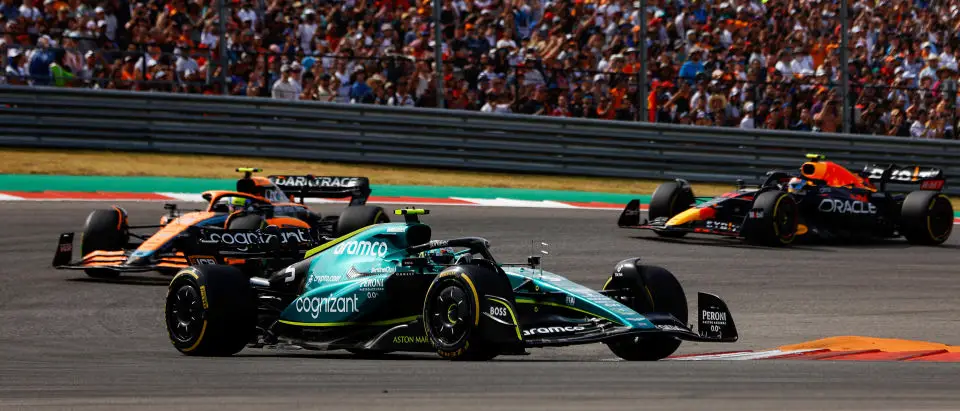Aston Martin’s F1 Dilemma: Misguided Simulations Lead to Season Struggles
Aston Martin’s F1 team faced a challenging season due to misleading simulations that affected their car upgrades. Despite initial success, the team struggled to keep up with rivals as the season progressed.
Key Takeaways:
- Aston Martin’s performance in the 2023 F1 season suffered due to misleading data from their simulation tools, causing ineffective upgrades.
- The team’s technical staff, including Dan Fallows and Eric Blandin, acknowledged the errors in their simulation processes and are focused on improving them.
- Performance Director Tom McCullough emphasized the challenge of balancing cornering speeds and rear ride height optimization to be competitive in both low and high-speed corners.


Aston Martin’s journey through the 2023 Formula 1 season was a rollercoaster of highs and lows, starting off with a promising performance led by Fernando Alonso’s podium finishes. Initially perceived as a strong contender against Red Bull Racing, the team’s fortunes took a turn as rivals like Mercedes, Ferrari, and McLaren advanced with effective performance upgrades, while Aston Martin faltered.
The root of the issue, as revealed by Technical Director Dan Fallows, was the team’s reliance on simulation tools that led them astray. The simulations, which were supposed to guide the team in developing effective upgrades, ended up causing a detrimental impact on the car’s balance. Fallows explained, “We can see where we went wrong in terms of upsetting the car balance. We’ve understood why that’s hurt our overall performance. Now, it’s a question of making sure that we don’t make the same mistakes again: it’s certainly been a year of learning.”
The United States Grand Prix served as a testing ground for Aston Martin’s latest upgrades. While Alonso’s car reverted to its earlier Qatar-spec, Lance Stroll’s car, equipped with the new upgrades, showed promise with a P6 finish. This indicated a potential turnaround for the team, signaling that the latest changes might be steering them in the right direction.
Deputy Technical Director Eric Blandin pointed out the source of the problem, stating, “We were led in a certain direction by our simulation tools on the aerodynamic side, and we did follow a path that was just the wrong one. I think we have now corrected the issue with the new package.” His comments underscored the importance of accurate data and simulations in F1’s highly competitive environment.
Addressing the future, Performance Director Tom McCullough highlighted the ongoing challenge of finding the right balance in car setup. He remarked, “Ultimately, with this generation of cars, being strong in low and high-speed corners, from a rear ride height optimisation, is a little bit of a challenge without having porpoising, and how close you get to that. That is still the issue now two years down the road for everyone.” McCullough’s insights reflect the complexities of F1 engineering, where even minute adjustments can have significant impacts on performance.
In conclusion, Aston Martin’s experience in the 2023 F1 season serves as a stark reminder of the intricate balance between technology, data, and real-world performance. As the team looks forward to the remaining races, the lessons learned this year will undoubtedly shape their approach, with a focus on ensuring more reliable and effective upgrades.


